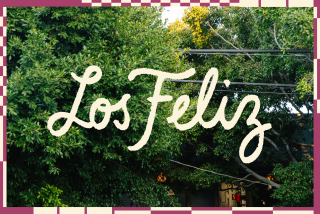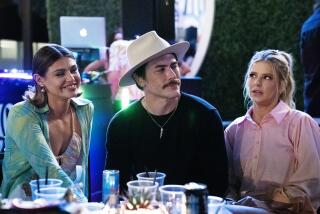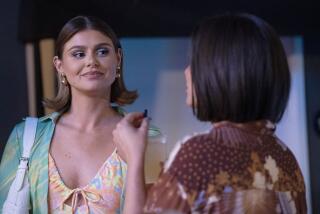Heidi Fleiss: The Would-Be Madam of Crystal
“Heidi Fleiss: The Would-Be Madam of Crystal,” premiering tonight on HBO, reacquaints us with a woman never too long out of the public eye. It has been almost a decade since Fleiss left prison, where she’d spent 21 months of a three-year sentence for tax evasion, money laundering and pandering. In that time she has run a West Hollywood boutique, published a kind of scrapbook memoir, put out a “sex tips” DVD, written a magazine column, had a radio show, sold the rights to her life story to Paramount and accused boyfriend Tom Sizemore of domestic violence. (He was convicted.) Not necessarily in that order.
She is no stranger to film, either, as the subject both of a 1995 Nick Broomfield documentary and a 2004 TV movie starring Jamie-Lynn Sigler. The occasion for the current film is Fleiss’ ongoing attempt to open a brothel -- a brothel for women, staffed by men, that she calls the “stud farm” -- in the hamlet of Crystal in Nye County, Nev., where prostitution is legal yet not free from controversy. (Pahrump, Nev., where Fleiss lives, is the big city compared to Crystal’s cross-hatching of dirt roads and was the setting of the Sundance Channel’s documentary “Pleasure for Sale.”) Her plans for the place, inspired by oysters and monasteries, are impressive -- it’s like Bugsy Siegel’s dream of the Flamingo all over again, with sex.
The media loves an upscale madam, and Fleiss’ privileged background made her even more irresistible -- plus she looked good in photo spreads. As someone who made sure not to take anyone with her when she fell, whose crime was “victimless” and whose punishment was unusually harsh, she has been treated kindly in the media: a plucky, totally messed-up heroine. As seen here, by filmmakers Fenton Bailey and Randy Barbato, she is likable but frustrating -- both honest and unreliable, a smart, capable woman only half in charge of her own life. Even physically, she’s at war with herself. Fleiss, who was 41 at the time of this filming, has had some distracting cosmetic surgery; it makes her look not quite well, a state further exaggerated by an admitted substance abuse problem. Often heedless of the way she looks for the camera -- dressed in sweats with stringy hair -- she sat down for an interview perfectly packaged and shot in kindly soft focus. She had been sober for eight days at the time.
Fleiss encounters both local resistance and local support and becomes friends (after a fashion) with her next-door neighbor, a retired madam whose house is given over to exotic birds. There is a kind of caged/free allegory that runs through the film, somewhat oversold by the filmmakers -- portentous images of shadowy cages, shots of birds flying free. “I do feel I carry the soul of someone who was exterminated in a concentration camp,” says Fleiss, who inherits the birds when her neighbor dies and sets about building them a proper aviary. Unexpectedly, the film becomes a kind of interspecies love story: “His soul was human,” she says, remembering a parrot she loved. As for the “stud ranch,” Fleiss finds her plans sidetracked because of her association with Pahrump brothel owner Joe Richards, who is under investigation for bribery. Also, she’s just been charged with felony possession of drugs, resulting from a February traffic stop.
In the meantime, she has opened a laundromat in Pahrump, called Dirty Laundry. It appears to be doing well.
More to Read
The biggest entertainment stories
Get our big stories about Hollywood, film, television, music, arts, culture and more right in your inbox as soon as they publish.
You may occasionally receive promotional content from the Los Angeles Times.











